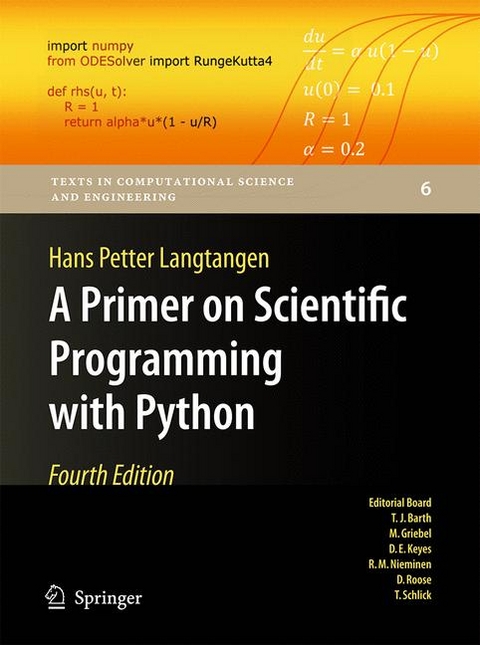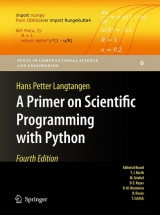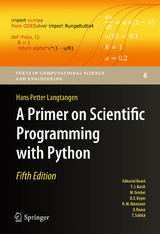A Primer on Scientific Programming with Python
Springer Berlin (Verlag)
978-3-642-54958-8 (ISBN)
- Titel erscheint in neuer Auflage
- Artikel merken
Hans Petter Langtangen is a professor of computer science at the University of Oslo. He has formerly been a professor of mechanics and is now the director of a Norwegian Center of Excellence: "Center for Biomedical Computing", at Simula Research Laboratory. Langtangen has published over 100 scientific publications and written several books, including papers and a book on Python's potential for scientific computing. He has also developed open source and commercial software systems for computational sciences.
Preface.- Computing with Formulas.- Loops and Lists.- Functions and Branching.- User Input and Error Handling.- Array Computing and Curve Plotting.- Dictionaries and Strings.- Introduction to Classes.- Random Numbers and Simple Games.- Object-Oriented Programming.- Sequences and Difference Equations.- Introduction to Discrete Calculus.- Introduction to Differential Equations.- A Complete Differential Equation Project.- Programming of Differential Equations.- Debugging.- Migrating Python to Compiled Code.- Technical Topics.- Bibliography.- Index.
| Erscheint lt. Verlag | 7.8.2014 |
|---|---|
| Reihe/Serie | Texts in Computational Science and Engineering |
| Zusatzinfo | XXXI, 872 p. 170 illus., 70 illus. in color. |
| Verlagsort | Berlin |
| Sprache | englisch |
| Maße | 193 x 260 mm |
| Gewicht | 2280 g |
| Themenwelt | Mathematik / Informatik ► Informatik |
| Schlagworte | Monte Carlo simulation • numerical calculus • Numerical Methods • object-oriented programming • Ordinary differential equations • Python programming • vectorization |
| ISBN-10 | 3-642-54958-6 / 3642549586 |
| ISBN-13 | 978-3-642-54958-8 / 9783642549588 |
| Zustand | Neuware |
| Haben Sie eine Frage zum Produkt? |
aus dem Bereich





